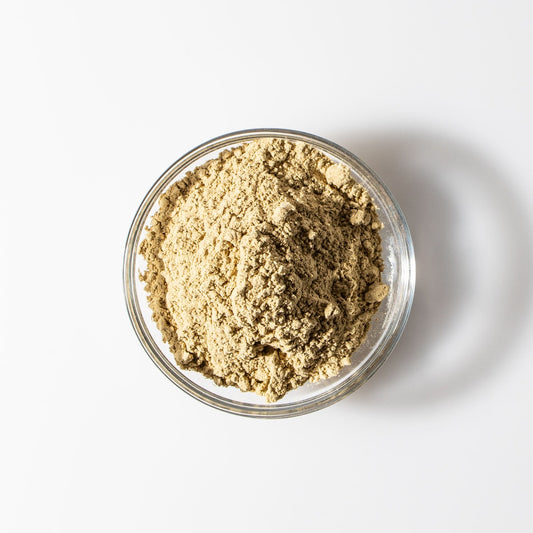Keeping the body in balance is a constant dance. The activities of our day can shift like the wind, and along with them, the state of our mind, digestion, and skin are also likely to change. But when we have an understanding of how an imbalance can occur, predictability is at our fingertips.
Taking a look at how our regular routine impacts us is a great start, as sometimes even the things we do to stay healthy may have consequences over time. Our approach to exercise serves as a strong example.
We can predict that each workout session will bring rise to vata dosha, along with a mental and physical high. It is only with the knowledge and means of managing this surge that our exercise will continue to serve us without repercussion.
Exercise stimulates our sympathetic nervous system and leads to an increase in breathing rate, heart rate, and blood pressure. Our bodies are designed to handle this type of fluctuation temporarily, but remaining in this state for any sustained duration can become taxing.
We know this from Ayurveda's concept of accumulation. Whether an experience is viewed as positive or negative, repetition of the experience will create a slow build-up of similar qualities. Ultimately, this can make us feel unwell.
Our body's response to exercise mirrors our body's response to stress. Therefore, failure to calm and settle after a workout could lead to symptoms of increased vata, or an accumulation of the ether and air elements. Excess or imbalanced vata can wreak havoc on the mind and body, often creating indigestion, dryness, depletion, anxious or nervous feelings, and trouble sleeping. Yet when we establish a grounding post-workout routine, we can dodge these imbalances, keeping vata nourished and allowing the body to replenish properly. Here are five tips to get you started.

1. Transition Gradually
Take it slow. It is not only physical movement that contributes to increasing vata, but also hopping too quickly from one task to the next. Allowing for proper transition time after your workout, even a mere five minutes, can encourage a shift from the heightened state of your sympathetic nervous system towards a more grounded one.
Recognizing the completion of an activity before the start of something new can also generate self-awareness and integration. Think, for example, of resting in Savasana (Corpse Pose) at the end of a yoga practice. Also, the more aware you are of your body, the more easily you can identify imbalances before they truly manifest.
Should you feel rushed, simply sit and pause for a few breaths, saying to yourself, “I am done with my workout. I will now begin to …”
2. Stretch to Reduce Stress
Take a cue from your yoga asana practice and stretch after your workout. While stretching, tend not only to the muscles involved in your exercise session, but also those that bear the brunt of repetitive action during your day.
The usual suspects include your chest and shoulders because of the abundance of time most of us spend on computers and phones. Coincidentally, these muscles are prone to excessive contraction when under stress due to the instinct to guard and protect.
This area can be targeted through a mild, passive backbend:
- Roll up a blanket or a towel and, laying down on your back, place it lengthwise along your spine from your head to the top of your sacrum.
- Stretch your arms out from your sides with your palms facing up.
- Take deep breaths to allow for full expansion of your ribcage.
- Stay for 2–3 minutes.
3. Rest, Breathe, and Recalibrate
To recalibrate your heart and respiration rate, incorporate a short breathing practice. Sheetali Pranayama works nicely as a soothing and cooling breath. Here's how to practice:
- Sit comfortably with your spine upright.
- Roll your tongue, or shape your mouth as if drinking through a straw if you are unable to roll your tongue.
- Breathe in through your mouth and then slowly breathe out through your nose.
- Complete 7 rounds.
Finally, don't rule out Savasana because of going for a jog instead of practicing downward dog. Your body and mind will appreciate a moment of stillness after the rigor of exercise. Choose either to lie down after your breathing practice or to remain seated with your eyes closed.
4. Self-Massage with Mahanarayan Oil
A sure way to keep your muscles happy long after your workout is through the practice of abhyanga. Self-massage encourages proper circulation of blood and lymph and could reduce the amount of soreness after exercise and allow for faster muscle repair.
You can enhance the benefits of a post-workout self-massage by using Mahanarayan Oil, one of Ayurveda's traditional herbal oils for joints, muscles, and connective tissue. The heavy qualities of this oil balance the lightness of a workout, while herbs like turmeric and guduchi cleanse excess heat and ashwagandha works its magic by strengthening and nourishing the muscles.
Start at your extremities and massage lightly in circular patterns around your joints. Create long strokes across your long bones and muscles as you work towards your heart. Leave on your skin for up to 20 minutes. Shower to rinse any excess or residue.
5. Rebuild your Tissues with Nourishing Food
The ability to digest is hampered during exercise so that the body can effectively supply muscles with energy and blood flow. It's important to replenish after your workout, after giving yourself at least 20 minutes to come down from your natural adrenaline high.
Opt for foods that will nourish your muscle tissue, known in Ayurveda as mamsa dhatu, and your ojas, the body's health reserves. To rebuild mamsa dhatu, choose grains and proteins like mung beans or kitchari. Feed your ojas with almonds, dates, saffron, and ghee. Don't forget to toss in some spices like cumin, ginger, cardamom, or fennel to help you digest all of the nutrients you are offering to your body.
The Takeaway
The window of time after exercise is a great opportunity to remember the Ayurvedic principles of rejuvenation. These tips are just a few ways to support and refuel yourself after a workout. Just like anything in Ayurveda, your exercise routine has to be personalized to your needs and your unique constitution. Remember to take pauses, be grateful for your health, and allow time for self-care. The rest will come naturally.













